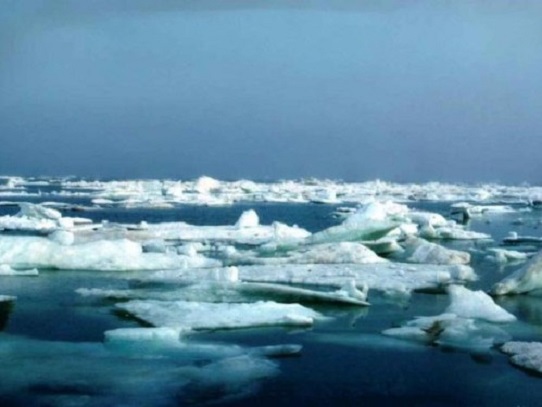
Report | Arctic Warms 4 Times Faster than Global Average, Surpassing Estimates
Keeping global heating below 2°C will mean saving the East Antarctic ice sheet, the world’s biggest, from catastrophic melt, but state-of-the-art climate models may well be underestimating the rate of Arctic amplification, according to two new studies from polar climate researchers.
“The fate of the world’s biggest ice sheet rests in the hands of humanity,” reports the Guardian, citing new research out of Durham University that shows the East Antarctic Ice Sheet (EAIS) remaining stable and contributing “less than 0.5 metres of sea level rise by 2300” if global heating is kept below 2°C.
Failure to rein in warming could result in the EAIS contributing to as much as five metres sea level rise by 2500.
“This ice sheet is by far the largest on the planet and it’s really important that we do not awaken this sleeping giant,” said Durham glaciologist and lead author Chris Stokes.
“Even a few metres of sea level rise will redraw the map of the world, with profound consequences for millions of people in coastal cities from New York City to Shanghai,” the Guardian writes.
Published in the journal Nature, the new study “assessed the sensitivity of the EAIS to global heating using data on how it responded to higher global temperatures in the past, information on the changes happening now, and computer simulations of possible futures.”
Signs that the “sleeping giant” is awakening include the collapse of the Conger ice shelf in East Antarctica last March.
Meanwhile, researchers at the Finnish Meteorological Institute in Helsinki have been grappling with the fact that while observational data shows that “during the last 43 years the Arctic has been warming nearly four times faster than the globe,” state-of-the-art climate modelling over the same time frame show much lower ratios of the phenomena known as Arctic amplification.
Just published in the journal Communications Earth and Environment, the Finnish study found that climate models “struggle” to simulate Arctic amplification. Its authors conclude that “the recent four-fold warming ratio is either an extremely unlikely event, or the climate models systematically tend to underestimate the amplification.”
Even the latest report from the internationally respected authority on global heating—the Intergovernmental Panel on Climate Change—pegs Arctic warming at “more than twice the global rate over the past 50 years,” notes Carbon Brief. That is still a very high rate of Arctic amplification, but nowhere near the four-fold warming ratio revealed by observational data over the same time period.
University of Exeter post-doctoral research fellow Matthew Henry, who was not involved in the study, explained just how difficult it is to estimate the rate of Arctic amplification, as opposed to the rate of global warming. Whereas “global warming uncertainty is mainly due to cloud feedbacks,” he . told Carbon Brief, “Arctic warming uncertainty arises from sea ice, cloud, aerosol, and atmospheric and oceanic heat transport processes.”
Consensus on Arctic amplification is made even more elusive by the fact that “there is no fixed definition of where the Arctic begins and ends,” notes Carbon Brief. The vast Arctic region is by no means monolithic, and areas in the Eurasian sector of the Arctic Ocean “have warmed even up to seven times as fast as the globe.”
Judah Cohen, director of seasonal forecasting at Atmospheric and Environmental Research (AER), told Carbon Brief the high Arctic amplification rate found in the Finnish study (in which he was not involved) could owe to a definition of the Arctic that excludes much of its land base. That could skew the results because “most amplified warming is over the ocean.”
Citing a 2019 study that found “up to half of recent sea ice loss—a key determinant of Arctic amplification—may be due to internal variability,” lead author of the Finnish study Mika Rantanen said the influence of such natural variability means “it is possible that in the future, [Arctic] amplification might be slightly lower.”
Source:The ENERGY MIX



